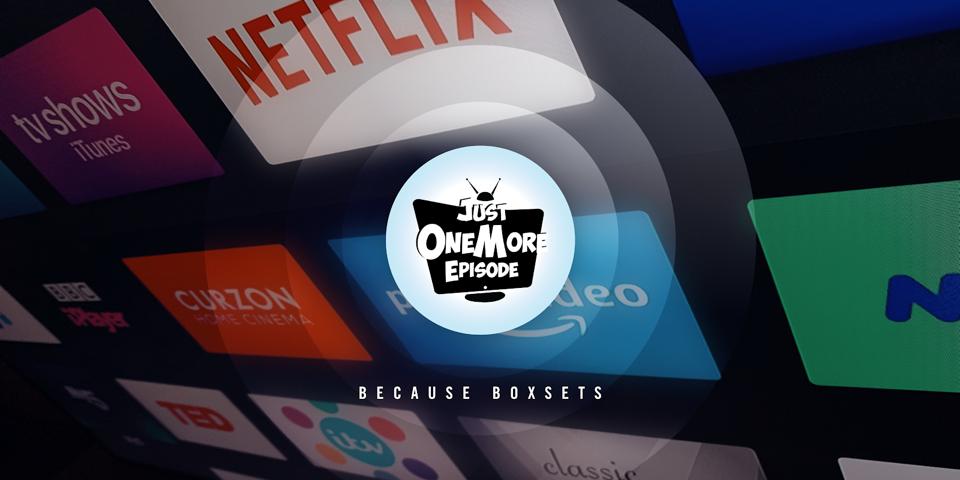Every minute, 6.5 boxsets are uploaded onto Netflix (probably). As soon as you think you’re on top of your consumption,
there’ll be a new season of that thing you like, or an unseen weekly instalment
of that other show that person at work said you should watch. It’s easy to feel you’re falling behind with a
lifetime ambition to complete the platform as if it were a video game,
sacrificing your other civic duties of staying at home and ordering stuff
online. But don’t worry, this blog is here to support you in
your boxset choice fatigue. You don’t
look at the BBC schedule and despair that you’ll never get round to sitting through
everything. So it should be the same for
the online streamers – you only need to watch what you want. And, to help, I have another hidden gem that
might appeal to you.
It has been freely acknowledged that previous hidden gems (un)covered
here may not be to everyone’s taste. As
an unregulated, practically unedited, weekly stream of my own opinions, all
that matters here is what I think, but all healthy debate is invited. I was one of the few who thought The Get Down was pretty much a masterpiece. I would still recommend Friends From College to anyone with a sense of
humour. Everyone should watch Dark, as the wondrous complexity of its plots
is only one of its many virtues. I could
go on. This week, after a recommendation
from a dear friend, I have been uncovering Soundtrack.
The trailer ticked a lot of my boxes, mostly because the
presence of singing and dancing indicated that this was probably a musical. Finally, something to come along and meet the
unreasonable expectations that I had of Glee. But this is the first point of difference to
cover with Soundtrack. The cast don’t
actually sing the songs. They lip-synch
to the soundtrack. This is best
illustrated by one of the opening scenes.
Nellie, our female lead, is getting ditched by her self-centred boyfriend
in a busy restaurant. As the emotion
hits home, the opening sirens and beats of Sia’s Elastic Heart are played
to us, the audience. But it also becomes
clear that these aural indications of mood and theme are perceptible to
Nellie. She mouths the words. She dances choreography. The background artists, masquerading as waiters,
join in as if her subconscious has expanded to include those around her. You’ll either run a mile at this point or
find it to be stirring stuff.
I was hooked.
Throughout the ten episodes, the soundtrack of, lol, Soundtrack, bleeds
into the characters’ actions and stories, often culminating in a quite
aggressive mash up in some episodes’ climaxes.
While today’s hit parade is often the source of these tunes, later
instalments raid Broadway and beyond.
Gender, race and age of recording artist are irrelevant. It’s all about the sentiment. Some performances play out as dream sequences,
others are more naturalistic, but the whole piece has an experimental
feel. And that’s why I laud Soundtrack:
it’s trying something new. We could
easily dismiss this as a gimmick, and some clanging moments (blocking!) in the
earlier episodes nearly saw me switch off, but its second strength comes from
its story.
Set in LA, Soundtrack at first appears to be a generic love
story, documenting the relationship of Sam and Nellie. Paul James and Callie Hernandez
prove so charismatic in these roles that you’re almost disappointed that
Soundtrack turns out to be an ensemble piece, with most episodes structured
around two other characters and their interplay, drawing focus to Sam and
Nellie’s family members, friends and social workers. That said, the episode Gigi/Jean is
carried solely by Megan
Ferguson as Nellie’s best friend, though with Nellie herself almost
entirely absent, and I found it one of the most compelling instalments. Sure, this is part La La Land, so everyone is
trying to make it in art or music or dance, or has made it in acting. This is also Netflix, therefore some elements
do take their time in order to fill the ten hour-long instalments, but this
also somehow doesn’t feel like the kind of fluff that this characteristically
flippant write-up would otherwise have you believe. It’s more affecting, though this might be
down to my own (and all of our) emotional vulnerability in lockdown.
So why not watch something that hardly anybody else is? Soundtrack is not as derivative as it first appears. It has devastating drama alongside banging
choreography that is filmed in a way that really lets you appreciate the movement. Some of the cast are better at lip-synching
than others, but this is part of its style.
It’s a great injustice that I don’t think we’re going to be treated to
any more of it, but let that reassure you that this won’t become something that
burdens your to-watch list with constant additional instalments. Soundtrack is the most hiddenest of gems, but
if you believe people should burst into spontaneous song and dance in real life
then let this single item in your Netflix algorithm offer some diversion from
reality.




























